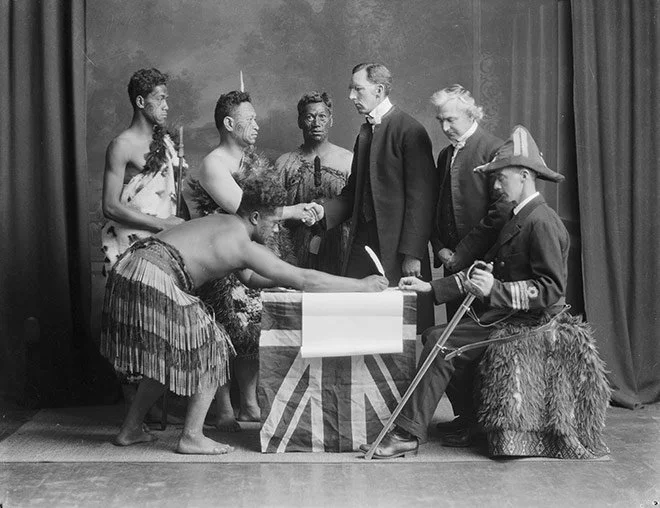Treaty of Waitangi Signed
In a landmark event that could define the future of New Zealand, representatives of the British Crown and more than 40 Māori chiefs have gathered at Waitangi in the Bay of Islands to sign a treaty establishing formal relations between Māori and the British government.
The document, known as the Treaty of Waitangi, was presented by Captain William Hobson, who has been appointed as the first Lieutenant-Governor of New Zealand. The treaty outlines British sovereignty over the islands while promising to protect Māori land ownership and grant Māori the rights of British subjects.
Crowds gathered under clear skies as Hobson read the treaty aloud in both English and a Māori translation. The discussions leading up to the signing were long and, at times, heated. Many chiefs expressed deep concern over the implications of British control, while others saw the agreement as a path to peace, stability, and trade.
1923 Reenaction of Te Tiriti signing
After careful debate, several influential rangatira, including Hone Heke, Tamati Waka Nene, and Pumuka, agreed to sign the document. More chiefs are expected to add their names in the coming days as copies are taken to other regions.
Captain Hobson, visibly moved, shook hands with the signatories, declaring, “He iwi tahi tatou” — “We are now one people.”
The treaty marks the beginning of a new era for New Zealand, bringing the islands officially under British protection. Yet questions remain about how the promises within the treaty will be upheld and whether both Māori and the Crown interpret its terms in the same way.
For now, the atmosphere in Waitangi is one of cautious optimism as New Zealand embarks on a new chapter in its history.


